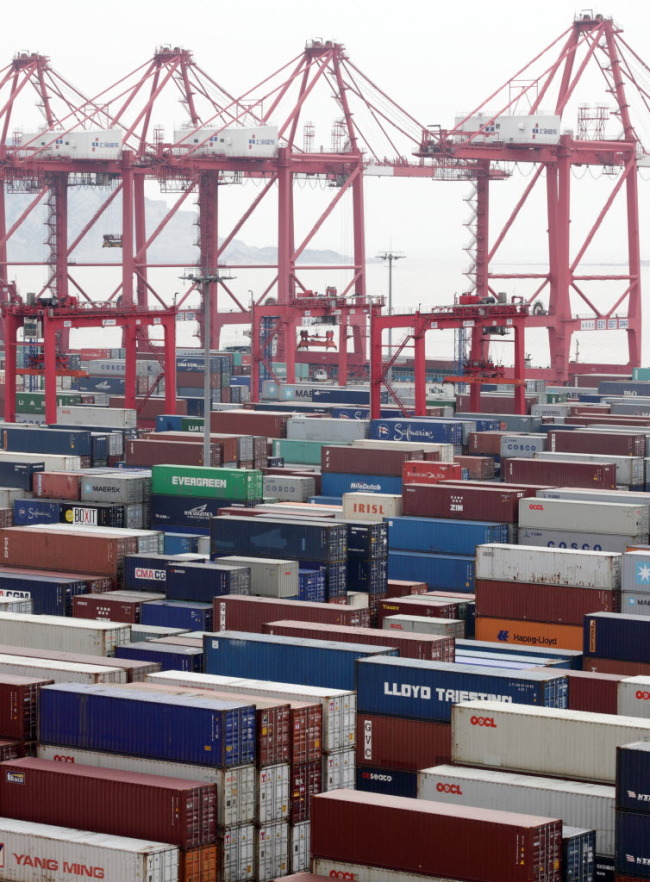 |
Shipping containers are stacked at the Yangshan Deep Water Port in ShanghaI. (Bloomberg) |
BEIJING (AFP) ― China’s manufacturing activity improved in April, the government said Thursday, showing increased strength for a second straight month as the country’s broader economy slows.
The official purchasing managers index was 50.4 in April, the National Bureau of Statistics said in a statement, up from 50.3 in March.
The index tracks manufacturing activity in China’s factories and workshops and is a closely watched indicator of the health of the economy. A reading above 50 indicates growth.
The result matched the median forecast in a survey of 11 economists by Dow Jones Newswires.
A preliminary estimate published by British bank HSBC put China’s PMI at 48.3 in April, better than 48.0 in March. HSBC is scheduled to release its final reading for April on Monday.
“The improvement of both PMIs reflects that a cyclical upturn is underway supported by the recent pro-growth targeted policies, and suggests that China’s growth momentum is stabilizing,” ANZ Bank economists Liu Li-Gang and Zhou Hao said in a research note.
But Zhang Zhiwei, economist with Nomura International in Hong Kong, urged caution despite the improving PMI.
“We do not believe the economy has passed a turning point,” he wrote in reaction to the result, adding that growth is set to slow to 7.1 percent in the second quarter.
“We expect the government to loosen fiscal and monetary policies in the next few months,” he said.
Thursday’s data, the first official reading on the world’s second-largest economy in the current second quarter, came after China’s economic growth for the first three months of 2014 came in at its weakest pace in 18 months.
Gross domestic product grew 7.4 percent in the first quarter from the same period the year before, weaker than the 7.7 percent in the October-December period.
The result was the worst since a similar 7.4 percent expansion in the third quarter of 2012.
China’s leadership says it wants to make private demand the key driver for the country’s economic growth, moving away from over-reliance on huge and often wasteful investment projects that have girded decades of expansion.
Such a transformation is expected to result in growth that is slower but seen as stable and more sustainable in the long run.
China in March set its annual growth target for this year at about 7.5 percent, the same as last year. But officials, including Premier Li Keqiang, have been quick to stress that the target is flexible ― seen as a hint it may not be achieved.








